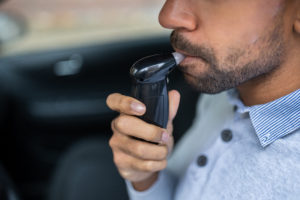 Few things can ruin an otherwise fun night faster than flashing lights in your rearview mirror. If an officer suspects that you’re driving over Pennsylvania’s legal limit for blood alcohol concentration—0.08%—they may ask you to take a roadside breathalyzer test. Breath tests can sometimes give false positive results, leading to serious legal consequences.
Few things can ruin an otherwise fun night faster than flashing lights in your rearview mirror. If an officer suspects that you’re driving over Pennsylvania’s legal limit for blood alcohol concentration—0.08%—they may ask you to take a roadside breathalyzer test. Breath tests can sometimes give false positive results, leading to serious legal consequences.
However, it’s important to note that, like all machines, breathalyzer tests are not perfect. If you think the test you took gave a false-positive reading, attacking its validity may be an effective strategy for avoiding the severe penalties associated with a DUI arrest.
What Are Some of the Factors That May Cause an Inaccurate Breathalyzer Result?
While most prosecutors and law enforcement officials would have you believe that the results of a breathalyzer test are infallible, it’s entirely possible that the data was skewed. These tests assume ideal testing conditions, a perfectly healthy and average-sized test subject, and a skilled test administrator, but various factors can lead to false positive readings.
In reality, however, we know that testing conditions are not always perfect and human beings are not one-size-fits-all. We also know that not all test administrators are experienced and that even skilled operators make mistakes. The logical conclusion, therefore, is that there are factors that can distort breath test results.
There are a few variables that could cause a false breathalyzer result, such as medications and the consumption of certain foods. We’ve broken down six possible factors that could contribute to a false positive test, all of which may be used as a defense in a court of law. If you believe any of these elements contributed to the result of your breathalyzer test, it’s vital that you get in touch with an experienced DUI attorney as soon as possible.
Poor Equipment Calibration
Law enforcement personnel follow precise rules to be certain breathalyzer tests function properly. If officers fail to calibrate the test correctly, you could receive a false positive result.
Medical Conditions
Medical conditions and medications that create acid in the stomach and esophagus could result in a false positive breathalyzer test result because they increase the BAC levels and may leave some presence of alcohol in the mouth.
Mouth Alcohol
Residual alcohol in the mouth—often referred to as mouth alcohol—can skew the results of a breath test. While breathalyzers have mouth alcohol detectors that are intended to pick up on mouth alcohol and abort the testing sequence, the detector doesn’t always provide an accurate result as residual alcohol or other substances can skew the data.
Contamination
Breathalyzer tests could easily be contaminated by outside factors, leading to false positive breath tests. For example, the device not being cleaned properly or chemicals in the air can cause the reading to be a false positive breathalyzer result.
Sugar Alcohol Found in Certain Foods
Some foods may encourage a breathalyzer test to give inaccurate readings. For example, pecans, ripe fruit, energy drinks, and protein bars have been known to skew breathalyzer test results. Further, if you have acid in your stomach from eating a spicy meal, you may not be able to rely on the accuracy of a breathalyzer test.
Operational and Human Error Issues
An accurate breathalyzer test result is contingent on the officer utilizing and maintaining the device properly, but operational and human errors can lead to false positives. The human element of the test opens the door for a number of operational errors, many of which could be used as defenses in your DUI case. Your attorney may argue the following:
- Your breath test didn’t accurately represent your true blood alcohol content
- Your mouth alcohol measured higher than your true breath alcohol level
- The amount of time between your arrest and the breath test was inadequate for an accurate result
- The breath test device was improperly maintained
- Unusual environmental factors led to an imprecise result
An expert DUI attorney who understands the ins and outs of Intoxilyzer 8000 defense law in Pennsylvania will be instrumental if you hope to dismiss the results of your test.
Contact the Trusted DUI Attorneys in Montgomery County
If you’ve been arrested for driving under the influence and need help challenging the results of your breath test, the Pennsylvania family law attorneys at Rubin, Glickman, Steinberg & Gifford, P.C., can help. For nearly 68 years, our team has been serving the legal needs of clients in Montgomery County, Bucks County, Lehigh County, Chester County, Delaware County, and throughout the surrounding areas. We’ve earned the trust and respect of clients facing a wide range of legal problems.
Our firm will discuss with you the facts and circumstances surrounding your case and together, we’ll put our best foot forward to reduce or completely vacate any penalties associated with the crime. Our highly trusted and well-versed legal team understands the ins and outs of Montgomery County DUI defense law and will be with you every step of the way. Our attorneys serve to protect you and guard your rights after a false positive breathalyzer test. Give us a call at (215) 822-7575 or complete our contact form.

Rubin, Glickman, Steinberg & Gifford P.C.
Pennsylvania Attorney's
June 20, 2024









